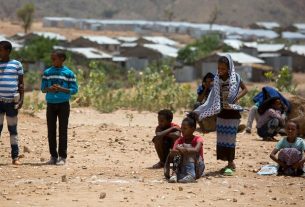The coastal Finnish town of Rauma became the site of the country’s first-ever school shooting in January 1989, when a 14-year-old boy killed two classmates using his father’s pistol.
The shooter claimed to be a victim of bullying, thrusting school harassment into the public eye and sparking widespread discussions in Finland that lasted into the early 1990s.
Persistent problem
It was at this time that Christina Salmivalli chose school bullying for her master’s thesis. Three decades later, she’s a renowned expert on the subject helping European countries tackle it as leader of an EU-funded research project.
‘The main question is why this happens – why we fail so often in putting an end to bullying,’ said Salmivalli, a professor of psychology at the University of Turku in Finland.
Half of the world’s students aged 13 to 15 – around 150 million in total – have their education disrupted by bullying and physical fights, according to a 2018 report by the United Nations Children’s Fund, or UNICEF.
It said that three in 10 students in 39 industrialised countries admitted to bullying peers.
Bullying takes various forms including verbal, physical and indirect (such as exclusion from social groups).
While bullying cases in Europe have dropped over the past decade, they remain widespread, according to Salmivalli.
She said that methods for collecting data on bullying vary significantly from country to country and that, as a ‘very rough’ estimate, 10% of school-aged children in Europe may endure such behaviour.
The project that Salmivalli leads is seeking to shed light on cases of bullying that persist even after school authorities have intervened to address it. Called CHALLENGE, the initiative started in October 2020 and is due to run until the end of September 2025.
Excellent credentials
Salmivalli has a proven track record in the field. A highlight of her career is the development of a programme to address and prevent bullying in schools.
“
The main question is why this happens – why we fail so often in putting an end to bullying.
Named KiVa, it not only serves as Finland’s bullying-prevention programme but also is used in schools elsewhere in Europe and beyond including Belgium, Chile, France, Italy, Mexico, New Zealand, South Africa and the UK.
The programme is based on the idea that the behaviour of peers who witness bullying incidents plays a crucial role in perpetuating or ending them.
Teachers encourage students to stand up for targeted classmates. Through in-class discussions, video games and films, educators raise awareness of various forms of bullying in a bid to foster empathy and respect among students.
To help determine why anti-bullying measures are sometimes ineffective, Salmivalli and her team have gathered data on more than 300 bullying cases in Finland from 31 primary and middle schools.
Participating teachers have registered the anti-bullying steps taken in each case. These include individual and group discussions with children involved in bullying and follow-up meetings on a phone application developed by the researchers.
The team has also gathered information on the “victims” and “perpetrators” through questionnaires that include details about classmates, friends and parents.
Initial findings indicate that around 20% of anti-bullying measures failed to put a stop to such behaviour, according to Salmivalli.
The researchers will now use all the information gathered to evaluate why the bullying persisted in these cases.
‘We are just in the process of combining it all in order to understand what happened and what went wrong,’ said Salmivalli.
Saliva samples
CHALLENGE is also venturing into molecular genetics to understand the reasons behind unsuccessful efforts to stop bullying.
The project is extracting DNA from saliva samples of students previously involved in KiVa. The aim is to assess whether certain genetic characteristics – such as ones linked to depression or anti-social behaviour – might shed light on failed efforts to stop bullying.
Saliva is the sampling method because of its relative ease. The samples are coming from approximately 20 000 young adults from Finland.
The CHALLENGE researchers have just received the last saliva samples and hope to get initial results in a year.
‘We expect to find children who were and were not affected by the KiVa intervention and examine which genetically influenced traits are associated with their response, be it either unsuccessful or successful,’ said Salmivalli.
Not so natural
Other EU-funded researchers are challenging the long-held view that bullying is merely a natural part of growing up, arguing that peer acceptance is crucial to teenagers as they gain independence from their parents.
“
Those types of experiences can impact every level, going much deeper than what we think.
In a project called Outside-In, the researchers are evaluating the physical and mental health far beyond the schoolyard of people who endured bullying.
Running for five years through August 2025, the project combines genomics and psychology to assess how adolescents who faced bullying biologically respond to it.
The suspected consequences can last through adulthood and include depression, anxiety, psychosis and sleep disturbances.
‘We’re trying to see whether those kinds of victimisation experiences can also get under the skin – an impact at the biological level that is potentially much more pervasive than we initially thought,’ said Matteo Giletta, who leads Outside-In and is an associate professor of psychology at Ghent University in Belgium.
Inflammatory response
The researchers are examining links between social exclusion faced by teenagers and their susceptibility to increased inflammation, a reaction by the immune system to injury or infection.
The Outside-In team has collected blood samples from 350 participating students. The goal is to extract information from their genomic activity and observe whether these students had a heightened inflammatory response.
Persistent inflammation has been linked to several chronic health conditions including cardiovascular diseases, certain cancers, depression and anxiety.
Unlike CHALLENGE, the main goal of Outside-In isn’t to curb bullying by bolstering intervention measures but rather to highlight its long-term effects.
‘Those types of experiences can impact every level, going much deeper than what we think,’ said Giletta.
Unique period
Salmivalli echoed the point by saying that bullying amounts to a breach of basic human rights.
‘There are many children who are really afraid, who feel threatened and unsafe,’ she said.
Bullying should also be considered a public-health matter given the lasting effects on the mental and physical wellbeing of people who endured such behaviour, according to Salmivalli.
She cautioned against any complacency in tackling bullying in Europe, saying cases on the continent have increased – albeit only slightly – since the Covid-19 pandemic in 2020 and the widespread lockdowns it triggered over two years.
Giletta said the pandemic caused a major disruption for teenagers by isolating them for a lengthy time during very formative years.
‘You don’t get back these couple of years,’ he said. ‘And these are unique periods.’
Research in this article was funded by the EU’s Horizon Programme via the European Research Council (ERC). The views of the interviewees don’t necessarily reflect those of the European Commission. If you liked this article, please consider sharing it on social media.



